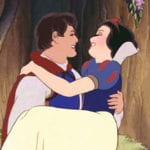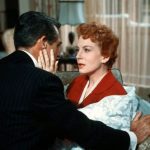 Facts
Facts  Facts
Facts  Movies and TV
Movies and TV 10 Movie Adaptions That Brought Popular Songs to Life
 Health
Health 10 Miraculous Advances Toward Curing Incurable Diseases
 Miscellaneous
Miscellaneous 10 Undeniable Signs That People’s Views of Mushrooms Are Changing
 Animals
Animals 10 Strange Attempts to Smuggle Animals
 Travel
Travel 10 Natural Rock Formations That Will Make You Do a Double Take
 Movies and TV
Movies and TV 10 Actors Hidden in Your Favorite Movies
 Our World
Our World 10 Science Facts That Will Change How You Look at the World
 Pop Culture
Pop Culture 10 Incredible Female Comic Book Artists
 Crime
Crime 10 Terrifying Serial Killers from Centuries Ago
 Facts
Facts 10 Things You May Not Know about the Statue of Liberty
 Movies and TV
Movies and TV 10 Movie Adaptions That Brought Popular Songs to Life
 Health
Health 10 Miraculous Advances Toward Curing Incurable Diseases
Who's Behind Listverse?

Jamie Frater
Head Editor
Jamie founded Listverse due to an insatiable desire to share fascinating, obscure, and bizarre facts. He has been a guest speaker on numerous national radio and television stations and is a five time published author.
More About Us Miscellaneous
Miscellaneous 10 Undeniable Signs That People’s Views of Mushrooms Are Changing
 Animals
Animals 10 Strange Attempts to Smuggle Animals
 Travel
Travel 10 Natural Rock Formations That Will Make You Do a Double Take
 Movies and TV
Movies and TV 10 Actors Hidden in Your Favorite Movies
 Our World
Our World 10 Science Facts That Will Change How You Look at the World
 Pop Culture
Pop Culture 10 Incredible Female Comic Book Artists
 Crime
Crime 10 Terrifying Serial Killers from Centuries Ago
Ten Of Hollywood’s Best Movies About Motherhood
Movies have captured our attention and appealed to our emotions ever since Thomas Edison first invented the motion picture camera. At their best, movies have not only tapped into the human imagination and created fantasy worlds of monsters, extraterrestrials, and superheroes that have scared us and put us on the edge of our seats, but they have also made us laugh and cry at situations we can all relate to.
Perhaps no single film storyline appeals to each person’s sense of sentimentality more than those that depict motherhood and the unique relationship each of us has with the one person who brought us into this world. Whether you are a mother yourself or just thankful for the mom who has loved and cared for you since the day you were born, enjoy this list of ten of the best films Hollywood has ever made depicting the trials and joys of motherhood.
Related: 10 Family Films Banned For Stupid Reasons
10 Dumbo
In 1938, brothers Roy and Walt Disney, fresh off of the success of their animated feature Snow White and the Seven Dwarves one year earlier, rewarded their parents with a new home in Los Angeles. The state-of-the-art house included modern conveniences such as a gas furnace. Tragically, a gas leak from that very furnace led to the Disney brothers’ mom’s death. Many believe that the loss of their mother led to a theme that is prevalent throughout many Disney films, from Bambi to Cinderella, an orphan struggling to overcome the death of a beloved parent.
In one of the Disney Studios’ greatest animated movies, the theme is not the death of one’s mother but rather the separation of mom and child. No film has more movingly depicted this than the beloved 1941 fantasy film Dumbo. After being locked in a circus wagon for being a “mad elephant,” Mrs. Jumbo, the baby pachyderm’s mother, has a brief moment with her son. Unable to see him, she cradles the little elephant with her trunk and rocks him to the lullaby “Baby Mine” before the two tearfully depart. If you’ve viewed this famous sequence and failed to get misty-eyed from the experience, check to see if you have a pulse. Your heart may be missing.[1]
9 Terms of Endearment
What more can you say about a feature film that focuses on the 30-year relationship between a mother and daughter that was not only a commercial and critical success but also claimed five Academy Awards, including Best Actress and Best Picture? Is it the greatest movie ever made dealing with the joys and pains of motherhood? Not necessarily, but the performances of Shirley MacLaine as widow Aurora Greenway and Debra Winger as her daughter Emma spoke to many women who could relate to the loving but sometimes contentious relationship between the two. And this tension was probably reinforced by the inability of both actresses to get along during production.
Perhaps others could relate to the marital instability of Emma with her professor husband Flap or Aurora’s on-and-off-again relationship with astronaut Garrett Breedlove, memorably played by Oscar-winner Jack Nicholson. Interestingly enough, director James L. Brooks, who also wrote the screenplay, penned the role of the astronaut specifically for Burt Reynolds. However, he rejected the part to appear in the universally panned Cannonball Run II instead. When later asked about his decision to turn down the offer to act in the award-winning film, Reynolds, with his characteristic wit, responded, “There are no awards in Hollywood for being an idiot.”[2]
8 Stella Dallas
In what continues to be one of the weepiest movies ever produced about the sacrifices of motherhood, Barbara Stanwyck, the star of many classics from Double Indemnity to The Lady Eve, arguably gave her greatest screen performance in the 1937 tearjerker Stella Dallas. Using the classic formula of the ill-fated poor girl/rich boy romance that would reach the pinnacle of popularity with 1970’s Love Story, Stella Dallas depicts a story with a different twist that focuses more on the mother/daughter relationship and the obstacles created by the class differences of the parents.
For further emphasis that Stella is from the “wrong side of the tracks,” “Ma Kettle” herself was cast as her mom, Marjorie Main. The two worlds that Stella and her husband Stephen are the products of create insurmountable obstacles in their relationship, ultimately leading to their separation. When Stephen reconnects with an old flame and asks for a divorce, their daughter Laurel becomes a pawn, ultimately leading Stella to make the ultimate sacrifice as a mother.
The closing scene of Barbara Stanwyck watching her on-screen daughter, played by Anne Shirley, marry ranks as one of the most emotionally affecting scenes in film history. Many to this day believe it should have cinched Stanwyck the Best Actress Oscar, an award she shockingly never won.[3]
7 The Blind Side
Who says a film about motherhood has to be sad and emotionally draining? In the 2009 movie The Blind Side, issues of racial prejudice, adoptive motherhood, and sports were all combined to create a story (based on a real one) about a white Memphis family who takes in a young African-America teenager and helps him to find a path that ultimately leads to an NFL career. For Sandra Bullock, it would not only earn her critical acclaim, but it would also score her the only Best Actress Oscar of her career to date.
Ironically, Bullock originally turned down the part in the film three times, citing her discomfort playing a character who is a devout Christian. However, after meeting the real Leigh Anne Tuohy, whom she would play on screen, her mind was changed. Bullock later admitted that thanks to the Tuohys, she now has “faith in those who say they represent a faith” and that “religious faith can be authentic.” Perhaps what’s most comforting and uplifting about The Blind Side is that in a world often divided by racial and religious prejudice, a story of healing and acceptance can affect not only the characters in a film but also the actors involved in playing them.[4]
6 Mildred Pierce
Legendary actress Joan Crawford would finally snag her only Best Actress Oscar for her first lead role in the Warner Brothers feature Mildred Pierce. After an 18-year contract with MGM, Crawford bolted for the rival studio after being declared “box office poison” by the Independent Theater Owners Association of America in 1938.
When she was cast as the lead in Mildred Pierce, director Michael Curtiz, who preferred either Bette Davis or Barbara Stanwyck for the part, rebelled and reportedly groused, “Why should I waste my time directing a has-been?” However, after seeing Crawford’s screen test, he changed his mind. Playing the part of a divorced woman who becomes a successful restaurateur while also being the overly indulgent mother to a spoiled, selfish teenaged daughter, Crawford excels. It was a groundbreaking part of a strong woman protagonist in a genre typically dominated by male leads, film noir. Ironically, Ann Blyth, who played her daughter Veda, bonded with Crawford, and the two became lifelong friends off the set. When Crawford later was accused of abuse by her adoptive daughter Christina in her “tell-all” biography Mommie Dearest, Blyth came to her friend’s defense, stating, “I have nothing but wonderful memories of Joan.”[5]
5 I Remember Mama
Adapted from the John Van Druten stage play and directed by George Stevens, 1948’s I Remember Mama was a nostalgic depiction of a struggling immigrant Norwegian family in turn-of-the-century San Francisco. Anchored by a strong cast, the film was nominated for five Academy Awards, although it failed to win a single one.
In the titular role, Irene Dunne, a legendary actress better known today for her collaborations with Cary Grant in some of Hollywood’s greatest screwball comedies, shines as the matriarch of a family of four children. Narrated by the oldest daughter, Katrin, an aspiring author, the central narrative is arguably a female variation of The Waltons, albeit set in a different era. Although fifty at the time of production, Dunne appeared too youthful for the part and was required to use makeup and body padding to credibly play the role of Mama. Dunne also skillfully mastered a Norwegian accent with the help of dialect coach Judith Sater.
For her performance, Dunne received her fifth and final nomination for Best Actress, failing to ever win a competitive Oscar. In a post-acting life that netted her a Papal Knighthood as Dame of the Order of the Holy Sepulchre and a Kennedy Center Honor for her service to the arts, an Oscar snub probably didn’t phase Dunne, who was known to her peers as “the first lady of Hollywood.”[6]
4 Steel Magnolias
As the ultimate “chick flick” designed not to leave a dry eye in the audience, the 1989 comedy-drama Steel Magnolias delivered in spades. With the actress who played Forrest Gump’s mom, Sally Field, playing the mother of soon-to-be superstar Julia Roberts, and an ensemble cast of Shirley MacLaine, Olympia Dukakis, Daryl Hannah, and everyone’s favorite Dolly Parton as a wigged beautician, what was there not to like? Apparently, not much. After appearing in the box-office top ten for 16 weeks, Steel Magnolias grossed over $95 million worldwide, well above its budget of $15 million.
Adapted from a 1987 play by Robert Harling, he based the story in part on his sister Susan, who died due to complications from Type 1 diabetes. The movie resonated with mothers and daughters and a few men, despite male characters playing a minimal role and offering limited support to the much stronger female personalities in the story. The strength of women and their abilities to bond in times of tragedy was a central theme in a film that would later be adapted into a pilot for a sitcom starring Cindy Williams and a Lifetime TV Network remake featuring Queen Latifah and an all African-American cast.[7]
3 Bachelor Mother
Although today she is best known as the dancer who did everything Fred Astaire did, except “backward and in high heels,” Ginger Rogers was also an Oscar winner at the peak of her fame. She got the nod as Best Actress for her dramatic performance in the 1940 film Kitty Foyle. But the sassy, streetwise blonde from Kansas City was never better than when she flashed her penchant for comedic timing a year earlier as a salesgirl in the romantic comedy Bachelor Mother.
In a film riddled with “mistaken identities,” Rogers is believed to be an unwed mother after a baby is abandoned on her doorstep. The confusion leads to a romance with the boss’s son, played by David Niven. Likewise, the foundling infant also finds its way into her heart as Roger’s career-girl character discovers her untapped maternal instinct.
Directed by Garson Kanin, the film somehow managed to circumvent the censors with what in 1939 was a risqué topic. Set during the Christmas season and New Year’s Eve, remarkably, this film is never mentioned among the classic holiday movies. Today, it remains a forgotten gem that deserves more modern viewership as one of the great movies from what is still regarded as Hollywood’s greatest year.[8]
2 Imitation of Life
Adapted from the 1933 Fannie Hurst novel, Imitation of Life was first adapted to the silver screen a year later and starred Claudette Colbert, who builds a business empire with her black maid Delilah’s pancake recipe. Douglas Sirk’s visually stunning 1959 version cast Lana Turner in the lead while changing her character into an aspiring actress. Both films’ stories are built around the struggles of two single women raising daughters.
In Sirk’s remake, Louise Beaver’s maid Delilah is replaced by Juanita Moore’s Annie, who is more of a nanny for the two young girls and whose relationship with her daughter Sarah Jane is much more of a focal point than the mother/ daughter relationship was in the previous film version. At the core of the movie’s central narrative is Annie’s light-skinned daughter, played by Susan Kohner, attempting to pass as “white” in America during the height of the Civil Rights Movement.
As with the 1934 film, many viewers could sympathize with Sarah Jane’s desire for equality, but her rejection of her loving African-American mother appalled many, particularly black audiences. The film’s finale of the guilt-ridden daughter throwing herself upon her deceased mother’s casket is a gut punch. Although many critics in 1959 derided the film as soap opera, many today, such as Emanuel Levy, regard Imitation of Life as one of the masterpieces of the 1950s.[9]
1 Places in the Heart
Sally Field garnered her second Academy Award for Best Actress in 1984, playing a plucky Depression-era widow trying to raise two children and save the family farm. With an ensemble cast that included Danny Glover as an unemployed drifter and John Malkovich as a blind lodger, she overcomes the odds with a misfit crew reminiscent of those John Wayne was often saddled with in Howard Hawks’ westerns such as Rio Bravo. In a moving depiction of life in Waxahachie, Texas, in the 1930s, this film was clearly a labor of love for director and screenwriter Robert Benton, who also picked up an Oscar for his original screenplay.
Over the course of the film, Field’s character evolves from a devoted mom and housewife to an independent farmer and businesswoman. She also has to take on the unenviable task of being a father, reluctantly spanking her son after he is caught smoking at school. But what drives the story is the authenticity of the characterizations, which seem as genuine as the costumes and location in which the story was set. Film critic Molly Haskell called Field’s three-dimensional performance of a mother “her best performance ever.” It certainly ranks as one of the most believable in a film that today still looks like it could have been lifted directly from a Norman Rockwell painting.[10]








